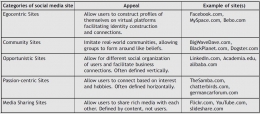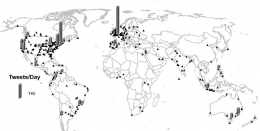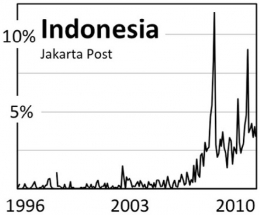In comparison, an attention to environmental issues especially climate change undertaken by the old media (i.e. newspaper), also has a positive trend in Indonesia. Schmidt et al (2013) found that there was an increase trend in the Indonesian newspaper attention to the issue of climate change up to 10 per cent of the data from 1996 to 2010.
Figure 5: The attention of Jakarta Post newspaper for climate change issues in Indonesia

Using blogs and social media are tools for involving the public (Mangold and Faulds, 2009). Publics feel more involved with the products and organizations when they are able to submit feedback. The feedback contributes to a sense of community that is honest, open communication is encouraged and enhanced public engagement. Use both internet-based information and traditional tools to engage the public is the best way to keep public up to date with the information.
Figure 6: The six progressive levels of participation

Parent et al (2011) state that there are six stages of public participation, from viewing, forwarding, commenting, creating and finally arbitrating (fig.6). This progressive participation is associated with the levels of involvement distinguished by Hallahan (table 1).
Table 1: Level of involvement

Along with the development of technology, when numerous studies on various aspects of social media grows, but no one has made a formal categorisation of social media. Frased and Dutta (2008) divide social media into five major categories at the very first time named: egocentric, community, opportunistic, passion-centric, and media sharing sites.
Table 2: Categories of social media















